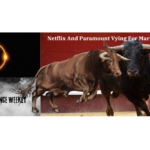Rugged individualism originates in the American frontier experience, where people had to rely on themselves for food shelter, and protection from predators.
And no American brand has captured this spirit in its purest form more than Harley Davidson. Now it’s a victim of its success, needing to distance itself from the image that has defined it for 118 years.
Ironically, younger motorcycle fans largely perceive rugged individualism as an outdated concept because they are more socially conscious than boomers and fundamentally reject the notion that they can survive or flourish without other people.
Reinventing An Icon
Like toxic masculinity, it is associated with narcissistic attitudes and behaviors that can hurt individuals and society as a whole. So Harley Davidson is facing an existential dilemma.
To make its iconic brand relevant to a new generation of riders it needs to pivot its imaging away from the cowboys on steel horses that made it iconic in the first place.
Data suggests a considerable generational divide in attitudes toward Harley Davidson’s heavyweight motorcycles. Older buyers tend to buy bikes for hobby or recreation, while younger buyers are more interested in ease of transportation.
The Long Shadow Of Former Glory
But brand perception is the real culprit to gaining traction with younger riders who may see the brand as a relic of a bygone era.
The rising Gen Z demographic may not fit the brand ethos, as they are more likely to associate Harley Davidson with beer, firearms, and motorcycle gangs than social equity and net-zero emissions.
Despite these challenges, Harley-Davidson has been taking steps to rebrand itself and reach younger riders. It is stepping up marketing efforts, such as rolling out a network of student ambassadors to promote the brand on campuses while introducing fresh new custom designs that can be changed on the fly digitally.
Electric Motorcycles Enter The Fray
Meanwhile, its first bold foray into electric motorcycles could give the brand a new lease on life with a new generation of socially conscious riders who care deeply about the planet.
That being said, it’s important to note that Harley-Davidson is facing stiff competition in the electric motorcycle market from well, everyone.
In addition to the usual suspects like Honda, Suzuki, and Yamaha, it is going head to head with emerging motorcycle brands with names like Zero, Energica, Lightening, and Revolt.
Competition Heats Up In Core Business
The younger generations are increasingly drawn to smaller, more affordable motorcycles like The Triumph Bobber which offers a stylish and affordable alternative to Harley-Davidson motorcycles.
The Ducati Scrambler is another popular option for millennials and Gen Z riders, as it provides a more wallet-friendly and accessible motorcycle while Honda, Yamaha, and Suzuki are gaining traction by offering a wide range of motorcycles at various price points, catering to diverse preferences and economic levels.
In its bid to capture the hearts and minds of its core customer’s children and grandchildren, Harley Davidson will need to continue evolving its marketing and branding efforts.
By collaborating with influencers, sponsoring relevant events, and being creative in social media platforms popular among Gen Z and millennials, it will begin the long process of brand transformation.
As it floods the market with more affordable and accessible motorcycles, it can accelerate the process and continue to develop smaller, sportier, and less expensive bikes that cater to the preferences and budget constraints of younger riders.
Community Never Gets Old
The brand will be well served by leaning on its roots in community building, a core value proposition of its new customers. Charity rides like Bikers for Babies which attracts hundreds of biker enthusiasts to raise funds for the March of Dimes, an organization that supports research and programs to improve the health of mothers and babies are just what the doctor ordered.
The new motorcycle models are right on time for the Harley-Davidson 120th Anniversary Celebration, a 4-day festival in Milwaukee, Wisconsin, the birthplace of Harley-Davidson. The event features live performances, a motorcycle parade, and various entertainment options tailored to different demographics.
Keeping The Soul Of The Brand Intact
The one competitive advantage that will resonate most with millennials and Gen Z is the brand’s openness and inclusiveness, welcoming riders from all backgrounds and walks of life, creating a sense of belonging and camaraderie among its community.
This differentiator must be captured powerfully in all of its marketing, advertising, social media, blogs and vlogs from the top of the funnel all the way to the last mile at the dealership.
So while the brand needs to refresh and soften the very image that made it an icon, it can resist the urge to overcorrect by leveraging its rich heritage as America’s sweetest badass.
SWOT Report is now Business Intelligence Weekly. The creator and journalist behind the digital publication, Andrew Ellenberg, is President & Managing Partner of Rise Integrated, an innovative studio that creates, produces, and distributes original multimedia content across digital touchpoints. To submit story ideas or ask about custom multimedia publishing, call 816-506-1257, email [email protected], or read more of his work in Forbes. To learn about his company check out this profile story.



